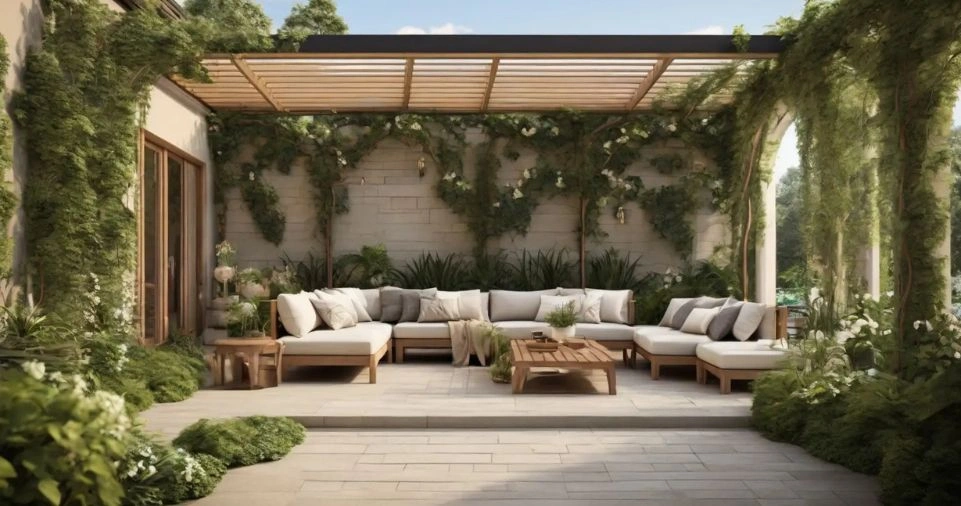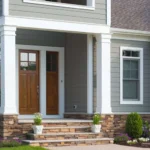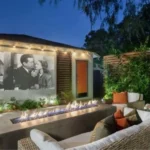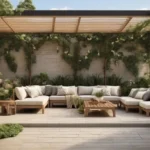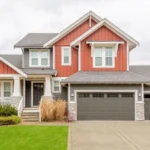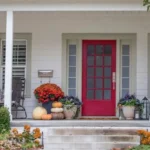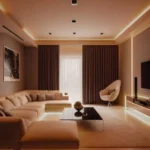Creating an outdoor seating area that feels like a seamless extension of your home is a rewarding way to enhance both your indoor and outdoor living spaces.
With thoughtful planning and design, you can craft an inviting, functional outdoor area that reflects your personal style while boosting your property’s value.
This comprehensive guide will explore every essential step to designing such a space, covering key topics from layout planning to material selection, lighting, and even seasonal considerations.
By following these expert tips, you can create a harmonious outdoor retreat that will serve as a sanctuary for relaxation and entertainment.
Define Your Purpose and Space
Start by asking yourself how you plan to use the outdoor seating area. Consider activities such as dining, lounging, entertaining, or simply relaxing.
Understanding the primary purpose will help shape the design and functionality of your space.
Tips for Space Planning:
- Assess Available Space: Measure the area and determine its shape to decide how much seating can comfortably fit without overcrowding.
- Set Priorities: If you have limited space, prioritize the activities most important to you, such as dining or lounging.
- Traffic Flow: Ensure there’s enough space for people to move around easily without disrupting others.
- Consider Zoning: Divide larger areas into specific zones for different activities, such as a dining section and a relaxation nook.
| Purpose | Space Requirements | Furniture Suggestions |
|---|---|---|
| Dining | 100-150 sq. ft. | Dining table, chairs, serving cart |
| Lounging | 50-100 sq. ft. | Sofa, coffee table, armchairs |
| Entertaining | 150+ sq. ft. | Sectional seating, fire pit, bar area |
Additional Considerations:
- Expand Vertically: Use hanging plants, string lights, or vertical shelving to make the most of small spaces.
- Multi-functional Furniture: Opt for pieces that serve dual purposes, like a bench with hidden storage.
Focus on Style and Cohesion
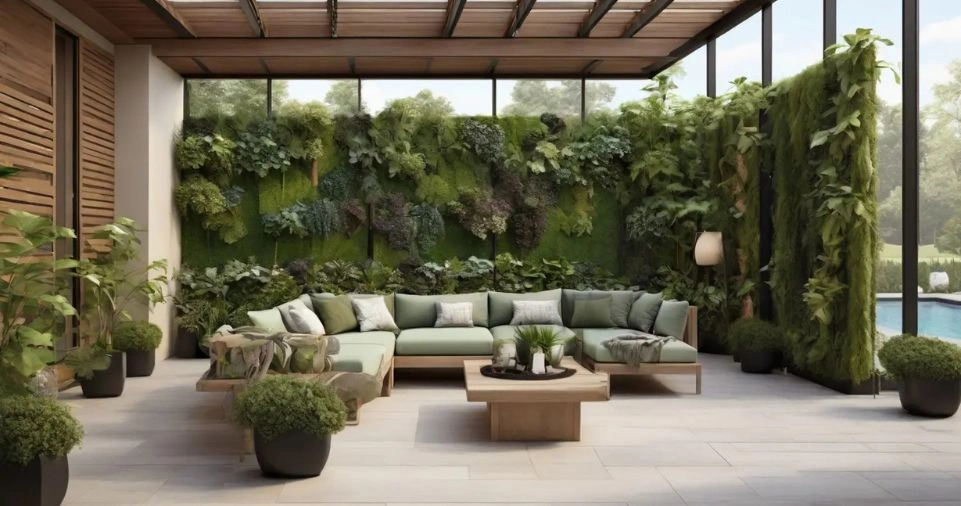
Your outdoor space should feel like a natural extension of your home’s interior design. Choose materials, colors, and patterns that complement the existing architecture and decor.
Key Style Elements:
- Materials: Use materials like wood, stone, or metal that blend well with your home’s exterior.
- Color Palette: Select neutral or complementary colors to create a cohesive look.
- Furniture Style: Match the furniture style (e.g., modern, rustic, boho) to your home’s interior design.
Enhancing the Aesthetic:
- Add outdoor curtains for a luxurious touch.
- Incorporate mirrors to create a sense of spaciousness.
- Use layered textiles, such as outdoor rugs and cushions, for depth and texture.
ALSO READ: How to Choose the Right Paint Colors for Your Home’s Exterior?
Choose Comfortable and Durable Furniture
Invest in high-quality, weather-resistant furniture that offers comfort and durability. Look for materials designed to withstand your local climate, such as:
- Teak: Naturally resistant to weather and insects.
- Aluminum: Lightweight, rust-resistant, and modern.
- Wicker: Stylish and durable, with a cozy look.
- Polypropylene: Fade-resistant and low-maintenance.
Cushion and Fabric Considerations:
- Opt for cushions with quick-drying foam and covers made from UV-resistant materials.
- Add pillows and throws for extra comfort and style.
- Choose fabrics with antimicrobial treatments to prevent mildew and odors.
Incorporate Functional Elements
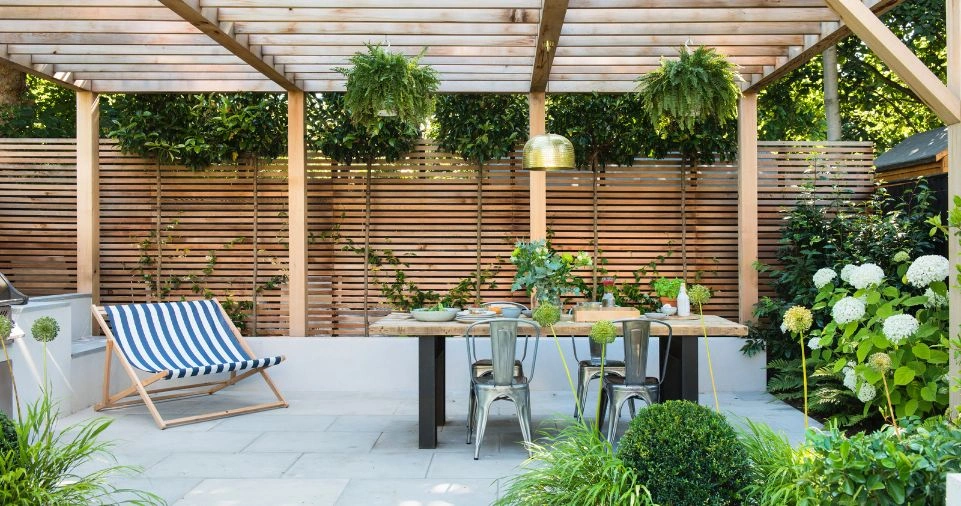
Make your outdoor seating area as practical as it is beautiful. Include features that enhance comfort and convenience:
- Shade Solutions: Add umbrellas, pergolas, or retractable awnings to protect against the sun.
- Lighting: Use string lights, lanterns, or built-in fixtures to create ambiance for evening use.
- Storage: Choose furniture with built-in storage for cushions, throws, or other essentials.
- Heating Options: Consider fire pits, outdoor heaters, or built-in fireplaces for cooler evenings.
- Outdoor Kitchenette: If space allows, install a small cooking station or bar area for entertaining.
| Functional Element | Benefits | Options |
|---|---|---|
| Shade | Sun protection, cooler environment | Umbrellas, pergolas, retractable awnings |
| Lighting | Ambiance, safety at night | String lights, solar-powered lanterns |
| Heating | Comfort during colder weather | Fire pits, outdoor heaters, chimineas |
| Storage | Organized and clutter-free space | Benches with storage, deck boxes |
| Outdoor Kitchen | Adds functionality, ideal for events | Grills, mini-fridges, prep counters |
ALSO READ: How to Boost Your Home’s Curb Appeal with Easy Exterior Updates?
Bring in Natural Elements
Nature is one of the most appealing aspects of an outdoor seating area. Enhance the connection to the outdoors with thoughtful landscaping and greenery:
- Potted Plants: Use planters to define the space and add color.
- Vertical Gardens: Great for small areas; they create a lush, vibrant wall.
- Trees and Shrubs: Provide natural shade and privacy.
- Water Features: Incorporate fountains or small ponds for a soothing ambiance.
Seasonal Tips:
- Rotate seasonal plants for year-round color and variety.
- Add evergreens for consistent greenery.
- Use flowering vines on pergolas for seasonal charm.
Pay Attention to Flooring
Outdoor flooring plays a significant role in defining the aesthetic and functionality of your seating area. Popular options include:
- Wood Decking: Warm, timeless, and natural.
- Stone Pavers: Durable, stylish, and versatile.
- Concrete: Budget-friendly and customizable with stains or patterns.
- Outdoor Rugs: Add texture, color, and coziness.
Flooring Comparison Table:
| Material | Advantages | Disadvantages |
|---|---|---|
| Wood Decking | Warm, natural look | Requires maintenance |
| Stone Pavers | Durable, upscale appearance | Higher cost |
| Concrete | Affordable, versatile | Can crack over time |
| Outdoor Rugs | Softens space, adds style | Requires cleaning and care |
Personalize Your Space
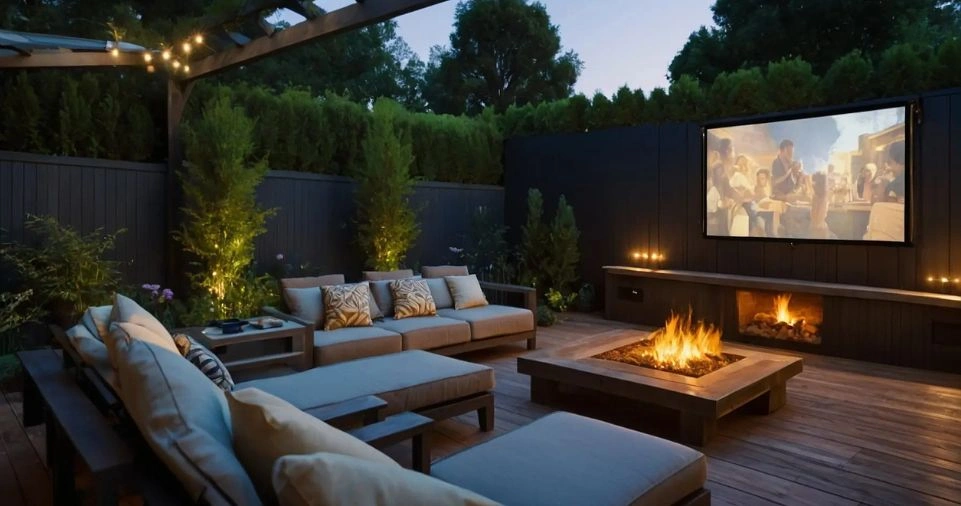
Finally, make the outdoor seating area truly yours by adding personal touches and decor:
- Artwork: Hang weather-resistant art or sculptures.
- Textiles: Use patterned cushions, throws, or tablecloths.
- Accessories: Add lanterns, candles, or decorative trays.
- Themes: Incorporate seasonal or cultural themes to reflect your personality.
- Technology: Install outdoor speakers or a projector for movie nights.
Creating Seasonal Ambiance:
- For summer, add bright colors, beachy decor, and citronella candles.
- For fall, incorporate warm tones, blankets, and fire pits.
- During winter, use twinkling lights, heaters, and cozy seating arrangements.
Conclusion
Designing an outdoor seating area that feels like an extension of your home is an exciting opportunity to blend functionality with style.
By focusing on purpose, style, and comfort, and incorporating natural and personal elements, you can create a space that’s perfect for relaxing, entertaining, or dining.
Use the tips and tables in this guide to inspire your project and transform your outdoor area into a haven that enhances your lifestyle and home value.
Whether you aim for a tranquil retreat or a lively gathering spot, the possibilities are endless when you plan thoughtfully and creatively.

